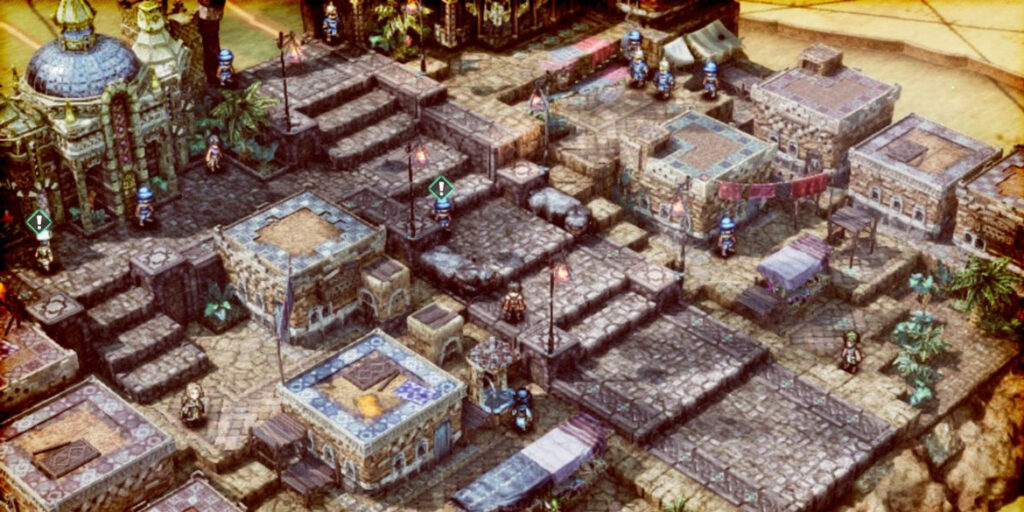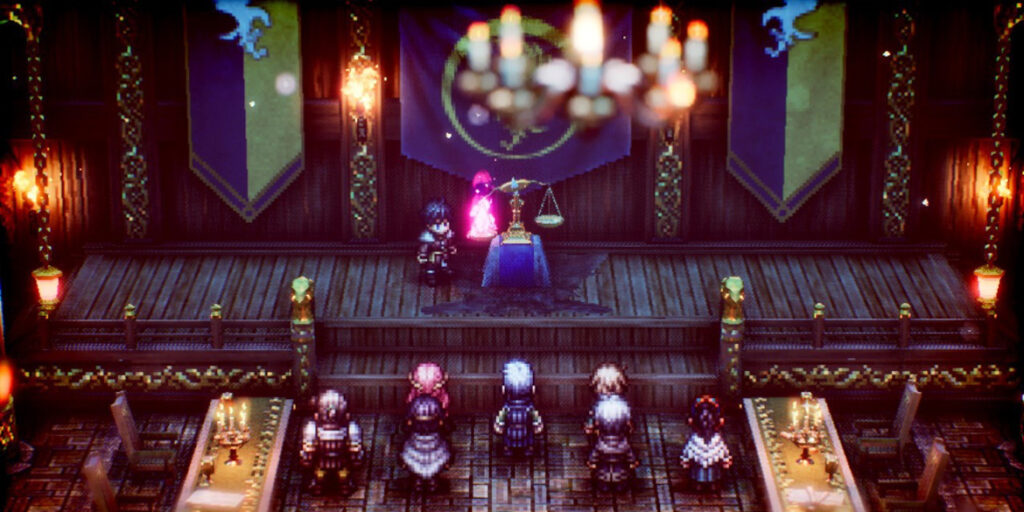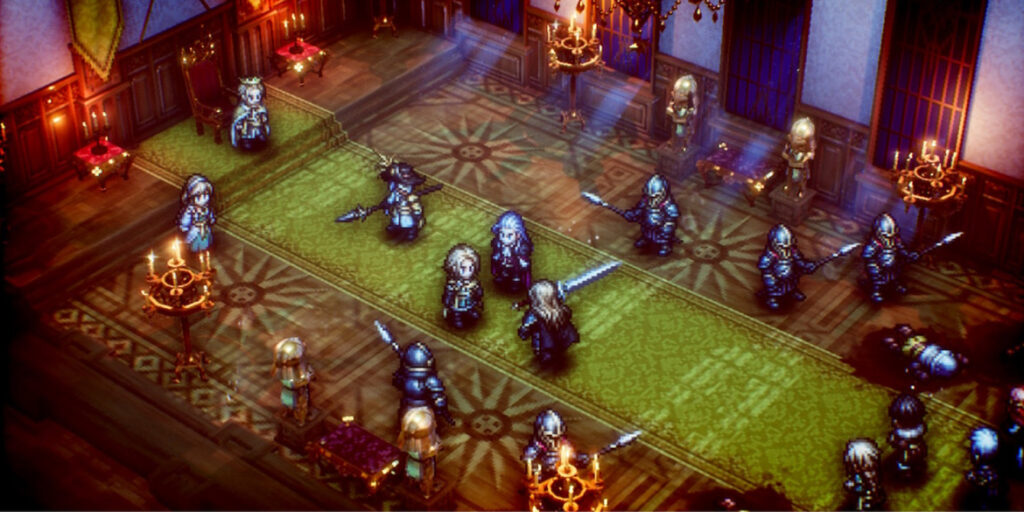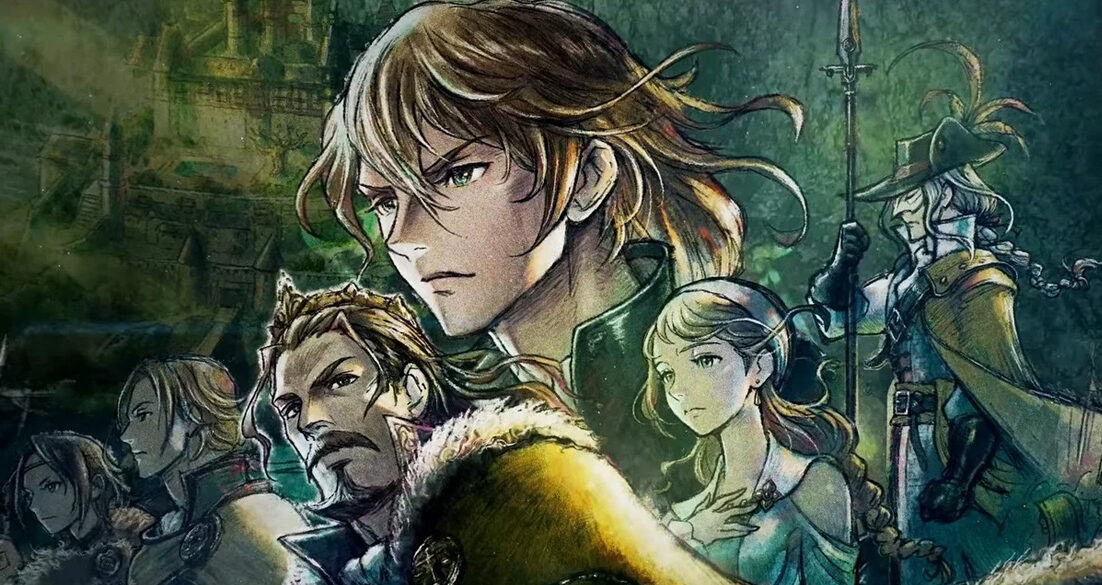Harkening back to the golden era of the Japanese role-playing game, ‘Triangle Strategy’ takes players back in time. Both in its medieval setting, as well as in its many gameplay elements. Drawing inspiration from classic tactics games of the past such as ‘Final Fantasy Tactics’ and ‘Tactics Ogre’, all while putting a new spin on this long forgotten formula. ‘Triangle Strategy’ more than stands out on its own, it shines under the spotlight.
Set within the fictional land of Norzelia, ‘Triangle Strategy’ as a name, pretty much sums up the game perfectly. A tactical role-playing game with three warring nations, all of which are fighting for control of the hottest commodity on the continent, salt. Towards the beginning of the adventure players are introduced to the three different nations, the Kingdom of Glenbrook, Hyzante, and Aesfrost. Thirty years prior to the games start, all of these nations were locked in a conflict known as the Saltiron War. By the beginning of the game, peace has graced the land as the three nations work towards unity. It is a simple set up for a story, but one the game fleshes out with rich dialog and world building. There is a colossal amount of back history in this world for you to discover, either by the in game story sections, or notes collected throughout the play through. One thing the game does not shy away from are long and robust story segments, all of which help to deepen the world around you.

Players are quickly introduced to Seronoa Wolffort, the main protagonist of the game and Heir to the Wolffort house. Fans of ‘Game of Thrones’ will find much to draw parallels to all throughout ‘Triangle Strategy’. While the Wolffort domain is not one of the three nations previously mentioned, they find themselves stuck in the middle of a growing conflict between all three. Serenoa’s best friend and loyal ally, Roland, is the second Prince of the crown, which is seated in Glenbrook. The basic setup for the nations see Aesfrost controlling the iron in the area, Hyzante having a monopoly on salt, and Glenbrook as the main seat of government. The three nations work together on a mining venture which sets our story on its way.
The setup and early parts of the game can be slow by modern day standards, but once the story pops off, players are thrown into a tale of political intrigue, backdoor deals, and medieval tactical warfare. The game is essentially split into three different areas: story cutscenes, tactical battles, and explorable areas. Utilizing the new HD2D style seen most recently in ‘Octopath Traveler’, the game presents a stunning take on the classic pixel art of the past. Each new area is brimming with style, a style any 90’s gamer will be familiar with. This modern take on a very classic formula equates to an amazing presentation throughout.

Where the game sets itself apart from the pack is the way it tells and allows you to affect its story. Players are constantly given choices throughout the play-through, some minor and some major. This can set players on radically different paths from one play through to the next, leading to multiple different endings. During these more important choices, the game gives you a very unique tool to help you decide, the Scales of Conviction. During these moments, players will be able to discuss the path ahead with their main party, as well as have the ability to convince them on which path they want to take. During these segments you will talk with each party member, each of which have a predetermined choice. You are given the ability to change their mind through dialog choices, some of which can be unlocked in nearby explorable areas. This system gives weight to the choices presented to you. Your party will then vote on the path forward, whichever vote comes out on top becomes your only path. While the convincing of party members can come across as overly easy, it is still a very unique system that engrosses you into the games story even more.
Between story choices and cutscenes are combat scenarios, which see players take their party out into the field. These scenarios play out on smaller grid based maps, which any fan of ‘Final Fantasy Tactics’ or ‘Fire Emblem’ will be familiar with. The order of actions is determined from each of the characters speed stat, higher speeds will be towards the front of the order. This gives combat a more intense feeling when compared to other titles, which see your entire party act followed by the entire enemy party. With teammates and enemies all acting in a recurring cycle, battles feel more unique each time you fight. Players will use attacks, skills, and defensive actions to carve their way through. As in any tactics game positioning is key in ‘Triangle Strategy’, players will guarantee a critical strike by attacking from an enemies back. However the same applies to your party as well, with the option to position which way the character is facing, players can protect their party from these critical strikes. Players will also get a followup attack when positioning two characters across from each other, with an enemy in the middle. These follow-up attacks can be performed by all characters except for the archers.

The title also has thirty unique characters you can, although some will require multiple play throughs. Each one brings a new way of fighting or supporting, making the tough choice between characters even tougher as the game progresses. Archers, melee fighters, magic users, and healers as in any game of this genre, all give the player a tough choice from battle to battle. Some of these characters can be recruited automatically through story progression, or some only come from specific conviction levels, which players build up blindly on their first run by making various dialog choices. During your first play through, players will not be able to see what the values of these convictions are. Once a new game plus run is started, however, the system opens up entirely, allowing you to see levels as well as those needed to recruit characters you haven’t met yet. It can be a somewhat frustrating system on your first run because of the lack of knowledge you have on these systems.
Between story segments and battles you can visit the encampment back at the Wolffort domain. Here you can buy various upgrades for weapons, promotions for characters, items from vendors, as well as participate in mock battles. These battles become your only way of farming experience and upgrade materials, although experience from lost battles actually count following a party wipe. A rare exception in this genre, any items, experience points, or money built up during the games many story battles, will carry over after restarting. This ensures players will not be stuck for too long on the games many hurdles because of being under leveled. It is a simple quality of life improvement that is a welcome addition.

While ‘Triangle Strategy’ leans on the games that came before it, it carves its own path, standing on its own for its unique world building a deeply human story. The political intrigue in Norzellia keeps players committed through its fifty-hour run time. Square Enix has finally begun listening to their fan base and cranking out the games we have wanted from them for the past thirty years by removing the need for change and sticking with the tried and true formula of classic 90s RPGs. While the story can feel almost jarringly similar to ‘Game of Thrones’, it carves out its own path by the end. The many choices and various endings give the title a heightened amount of replay value, something not frequently seen in modern gaming. While it took the studio thirty years to get back to this point, they are finally turning the corner and delivering fans expectations.



